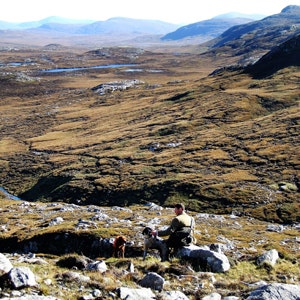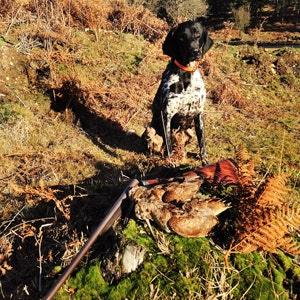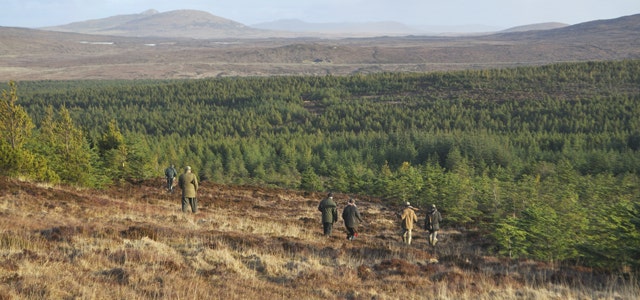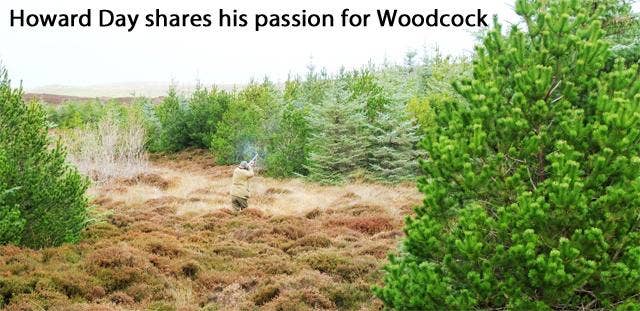 Fleeing south away from the cold Scandinavian and Russian winters, woodcock emigrate to British shores in late autumn, expanding the ranks of a small resident population. The warmer Celtic fringes host the largest congregations of birds. Whether in conifer forest or deciduous woodland, driven, over pointers, or walked up, these challenging birds are a sporting target. Loners by nature, outside of the breeding season woodcock are accidental socialites. They gather in greater densities where the conditions for feeding (soft ground easily penetrated by narrow beaks) and sleeping conditions (not too many pheasants as neighbours) are right.
Fleeing south away from the cold Scandinavian and Russian winters, woodcock emigrate to British shores in late autumn, expanding the ranks of a small resident population. The warmer Celtic fringes host the largest congregations of birds. Whether in conifer forest or deciduous woodland, driven, over pointers, or walked up, these challenging birds are a sporting target. Loners by nature, outside of the breeding season woodcock are accidental socialites. They gather in greater densities where the conditions for feeding (soft ground easily penetrated by narrow beaks) and sleeping conditions (not too many pheasants as neighbours) are right.
Driven woodcock shooting is challenging before you raise the gun: migratory birds at the mercy of the season and weather, woodcock are unpredictable and elusive creatures. Marry the lifestyle choices of the bird with its jinking, haphazard flight pattern and petite scale and the challenge is on. Although numbers can’t be guaranteed, driven woodcock represents the best chance of joining the exclusive Woodcock Club. Membership is by achievement of the elusive left and right (without lowering the gun between shots) at woodcock. A feat that must be witnessed by two people to qualify. We’ve seen as many as five birds in the air over a single gun at the same time, creating the opportunity to create sporting greatness if nerve can be held.
We ensure that each estate we work with applies a strict limit on the number of days of driven woodcock shooting they offer, a self-imposed conservation regulation. As a result, exceptional driven woodcock shooting is available on a very limited basis for complete teams of six to nine guns between November and January.
 While woodcock can crop up in the bag on many of our shoots, to truly appreciate these aerial acrobats, a day’s walked up woodcock and snipe is in order. Well-camouflaged in the leaves on the forest floor, woodcock happily sit tight until the dogs are almost on top of them before launching themselves skyward like coiled springs. This habit, when combined with their erratic, jinking flight pattern and diminutive size, challenges the gun’s reflexes, aim and accuracy.
While woodcock can crop up in the bag on many of our shoots, to truly appreciate these aerial acrobats, a day’s walked up woodcock and snipe is in order. Well-camouflaged in the leaves on the forest floor, woodcock happily sit tight until the dogs are almost on top of them before launching themselves skyward like coiled springs. This habit, when combined with their erratic, jinking flight pattern and diminutive size, challenges the gun’s reflexes, aim and accuracy.
Shooting truly wild birds in a truly wild location is what makes woodcock and snipe over pointers so exciting. Besides being home to a resident population of woodcock, the Isle of Lewis in the Outer Hebrides is on the Scandinavian flightpath, luring the birds in number to shores warmed by the Gulf Stream. It’s a rural myth that woodcock live exclusively in the trees. In the Outer Hebrides long heather provides cover, making these challenging birds a sporting target when flushed by pointers on the open hill. With nothing but open ocean between them and Canada, the Hebrides are a paradise for both of these elusive species. The islands have 15% of the UK’s freshwater area and only 1.3% of its landmass – circumstances best described as wet, wet, wet - even on the driest of days.
The perfect conditions for woodcock impose their own demands upon guns: comfortable waterproof footwear, spare socks, keen aim and the fitness to keep up with the dogs’ noses. The Farlows’ team can help with the first two (check out Meindl and Darn Tough – the rest is down to you!)
The migratory nature of woodcock species has made it difficult to get a complete picture of their lives, leaving us struggling to predict with any accuracy where and when they’ll turn up. The Game Wildlife Conservation Trust (GWCT) is working hard to fill in the blanks when it comes to British woodcock (Scolopax rusticola), exploring the implications of moon phase, prevailing wind and weather conditions on the breeding grounds in an attempt parse patterns and the reasons that underpin them.

Using stable isotope analysis (SIA) to analyse the feathers from shot birds, the GWCT’s scientists can tell where shot woodcock come from and whether they are resident birds or winter visitors. The better we can understand the patterns of these elusive birds, the better we as sporting guns can play a role in their conservation for future generations.
That’s why for the rest of this shooting season Outside Days will be asking guns for a £10 donation for each woodcock shot to go to the GWCT Woodcock Appeal. This appeal funds the cutting edge science enabling us to know more about this enigmatic species. To read more about their work and see how you can help, just click HERE

2015-12-01 11:33:35
141 view(s) 


